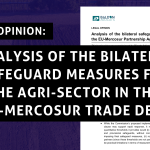
Brussels, Tuesday, May 17th 2022
TIME FOR MEPs TO TURN ENVIRONMENT COMMITTEE VOTES INTO ACTION
The Environment committee votes over the last few days prove that the Parliament has the chance to keep its promise in defending higher ambition, beyond the insufficient -55% net emissions target.
The numbers are clear – we need to significantly raise the ambition of all climate files and achieve at least 65% emission reductions by 2030. The ENVI committee made the first steps to improve the Commission’s proposal, but the plenary and Member States in Council will have to go further in order to halt dangerous climate change.
QUOTE: “Let’s not jinx it, now all MEPs need to support higher climate ambition in plenary in two weeks. The people and planet cannot afford for MEPs in the coming days to forget about the climate emergency we’re facing. They need to double down on efforts to make the climate proposals live up to the challenge.” Chiara Martinelli, CAN Europe Director
Emission Trading System:
QUOTE: “Today, the Environment committee’s votes show that the Parliament can be a defender of urgently needed ambitious climate action, but more is needed if we want to achieve the 1.5°C goal. The promise to accelerate the phase out of free allowances to industry by 2030 is a step forward, but still too late and severely undermines the polluter pays principle. A more robust EU carbon market is a critical ingredient in ensuring that the EU becomes Fit For 1.5 and contributes its fair share to the global fight against the climate emergency.” Klaus Röhrig, CAN Europe Climate & Energy Policy expert.
ANALYSIS: Today, members of the Environment committee of the European Parliament have voted to increase the ambition of the EU Emissions Trading System (ETS). However, the increase is not enough to represent a fair share of the EU’s efforts of limiting temperature increases to 1.5°C. The committee’s improvements are expected to achieve around 67% emission cuts in the ETS by 2030, but at least 70% reductions are necessary to make the EU carbon market consistent with the 1.5°C goal of the Paris Agreement.
The committee has also agreed to accelerate the phase out of free allowances to industry, a key barrier to the urgently needed transformation of heavy industry. Yet, the phase out is far from quick enough and means that the ETS will continue undermining the polluter pays principle until 2030. Previously, industry associations and climate NGOs have jointly called on EU deputies to phase out free allowances as soon as possible.
Other improvements of the Directive include setting stricter rules for the use of ETS revenues, making sure that neither fossil fuel nor nuclear energy can be financed through the scheme and extending the carbon market to the full coverage of maritime emissions and municipal waste incineration.
The compromise on introducing a new ETS for road transport and buildings has also passed, yet with significant changes to the Commission’s initial proposal.
Effort Sharing Regulation:
QUOTE: “The ENVI voted in favour of some improvements to the Effort Sharing Regulation. We welcome the support for access to justice, more transparency and use of revenues for climate. However MEPs overlooked the elephant in the room, dangerous loopholes, which jeopardises the overall EU emission target. It’s imperative that the June Plenary closes these to be in line with the Paris Agreement. ” Brigitta Bozsó, CAN Europe Climate Policy Expert
Analysis: The ENVI committee has failed to close the major loopholes in the Effort Sharing Regulation (ESR), but achieved some smaller improvements.
The ENVI adopted a more ambitious trajectory (than the one the Commission proposed), but this is still far from being in line with the Paris Agreement goal. MEPs ignored some amendments to adjust emission levels to reality – thereby inflating the emission budget by 180 Mt CO2.
In an important step, the ENVI adopted limits on the flexibilities of banking, borrowing and trading between Member States.
Major loopholes of Land Use, Land Use-Change and Forestry and Emissions Trading System credits as well as the ‘Safety Reserve’ remain intact – the ENVI failed to remove these. All these loopholes jeopardise the overall EU emission target. Our briefing shows that “Anything short of tackling surplus emissions that have been built up and will continue to build up under both the ETS and ESR will not allow the EU’s climate policies to be in line with the Paris Agreement.”
Land Use, Land-Use Change and Forestry:
QUOTE: “Increasing natural carbon removals is critical for our climate efforts and it’s good to see the ENVI committee vote acknowledging the importance that land sectors have for both mitigating the climate and biodiversity crisis. Traditionally the LULUCF rules have included many loopholes and we welcome moves by ENVI to minimise these. Although this is a good basis to enter into the negotiations with the Council, the June Plenary still has the opportunity to increase ambition.” Ulriikka Aarnio, CAN Europe Climate and Land Use Policy expert.
ANALYSIS: The Environment Committee voted yesterday on the revision of the EU’s Land Use, Land Use Change and Forestry Regulation (LULUCF). The Committee voted to increase the EU 2030 sink removal target to -360 Mt, and introduced sector specific targets to address emissions from agriculture lands. As expected, the Commission’s Agriculture, Forestry and Other Land-Use proposal to combine the LULUCF forest sink with agriculture emissions after 2030 was rejected. The Committee also introduced biodiversity considerations across the regulation as well as additional limits to the use of flexibilities.
Notes to Editors:
The negotiations on key climate files of the Fit For 55 package which was launched by the European Commission in July 2021, are approaching critical moments. On 16-17 May, the Environment (ENVI) committee of the European Parliament voted on the reports for the EU Emissions Trading System (ETS), including the proposal for a new Emissions Trading System for road transport and buildings (ETS2), the Effort Sharing Regulation (ESR) and the Land Use, Land Use Change and Forestry (LULUCF) Regulation.
After the vote in the European Parliament ENVI committee, the files will be then voted on in plenary in early June. The EU Council will have its next formal meeting to discuss the files on June 28. In parallel, EU heads of state and government will meet for an informal European Council on 30-31 May to discuss the package in the context of the RePowerEU plan.
Contact: Rachel Brabbins, Communications Coordinator, rachel.brabbins@caneurope.org



